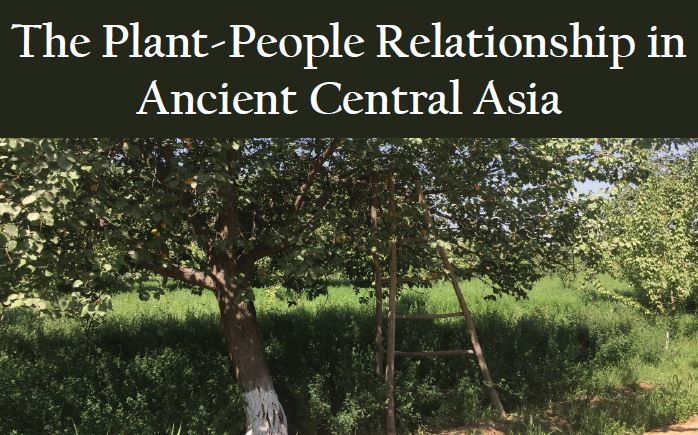Past Events
Interested in Cotsen events? Sign up for our mailing list.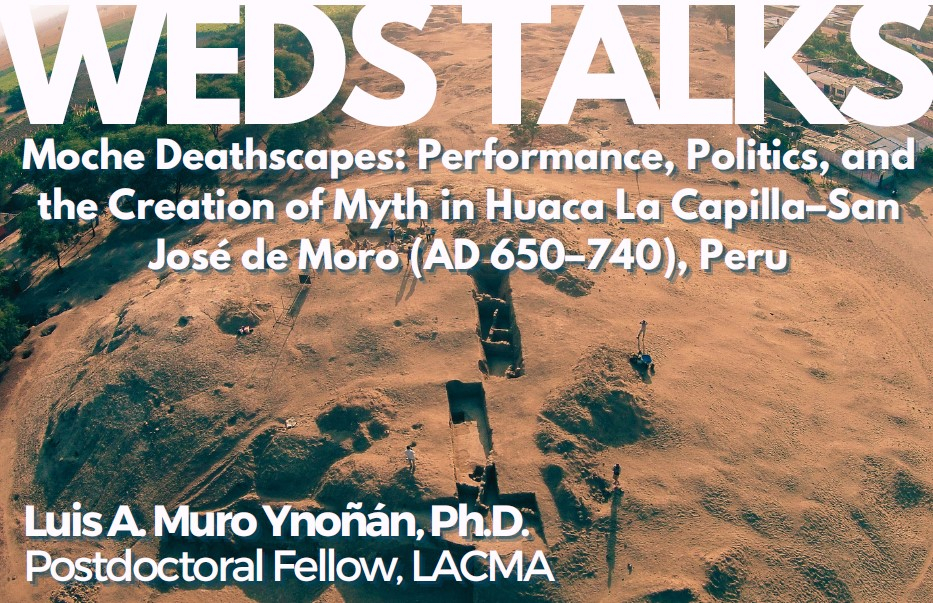
ABSTRACT: Death in the Moche world has traditionally been examined from object-centered perspectives that have favored discourses about hierarchy, status and power. However, such perspectives have left behind discussions about deathscapes and their role in the production of ancestors and the (re)distribution of political power. Based on my excavations at Huaca La Capilla, a monumental structure located in the Late Moche (650-850 CE) cemetery of San José de Moro, Jequetepeque Valley, I examine the dynamic and changing nature of mortuary landscapes and their monuments. I argue that Huaca La Capilla was the locus of body-centered performances that preceded the burial of Moche elite individuals. These performances were, ultimately, involved in the (re)production of myths of Moche ancestrality and particular notions of time, history, and construction of the being that gave political legitimacy to ruling groups in times of deep crisis.
BIO: Luis A. Muro Ynoñán is currently a Postdoctoral Fellow at the Los Angeles County Museum of Art and a Visiting Lecturer in the UCLA Department of Art History. Previously, he was a Postdoctoral Scientist at the Field Museum and a Pre-doctoral Fellow at the Pre-Columbian Studies program at Dumbarton Oaks. He holds a MA and Ph.D. from Stanford University and a BA and Licenciatura from Pontifical Catholic University of Peru. As a Peruvian archaeologist, Dr. Muro is broadly interested in the relationships between performance, death, and politics in the ancient Andes, integrating anthropological and performance theory with multi-scalar methods of spatial analysis and absolute dating techniques. He is now leading the Úcupe Cultural Landscape Project in Lambayeque, Peru, a multidisciplinary project that seeks to study the origins of Moche religion in relation to climatic fluctuations in the Andes in the first millennium CE.
Contact Sumiji Takahashi
Email sutakahashi@ioa.ucla.edu
Phone 310-825-4169
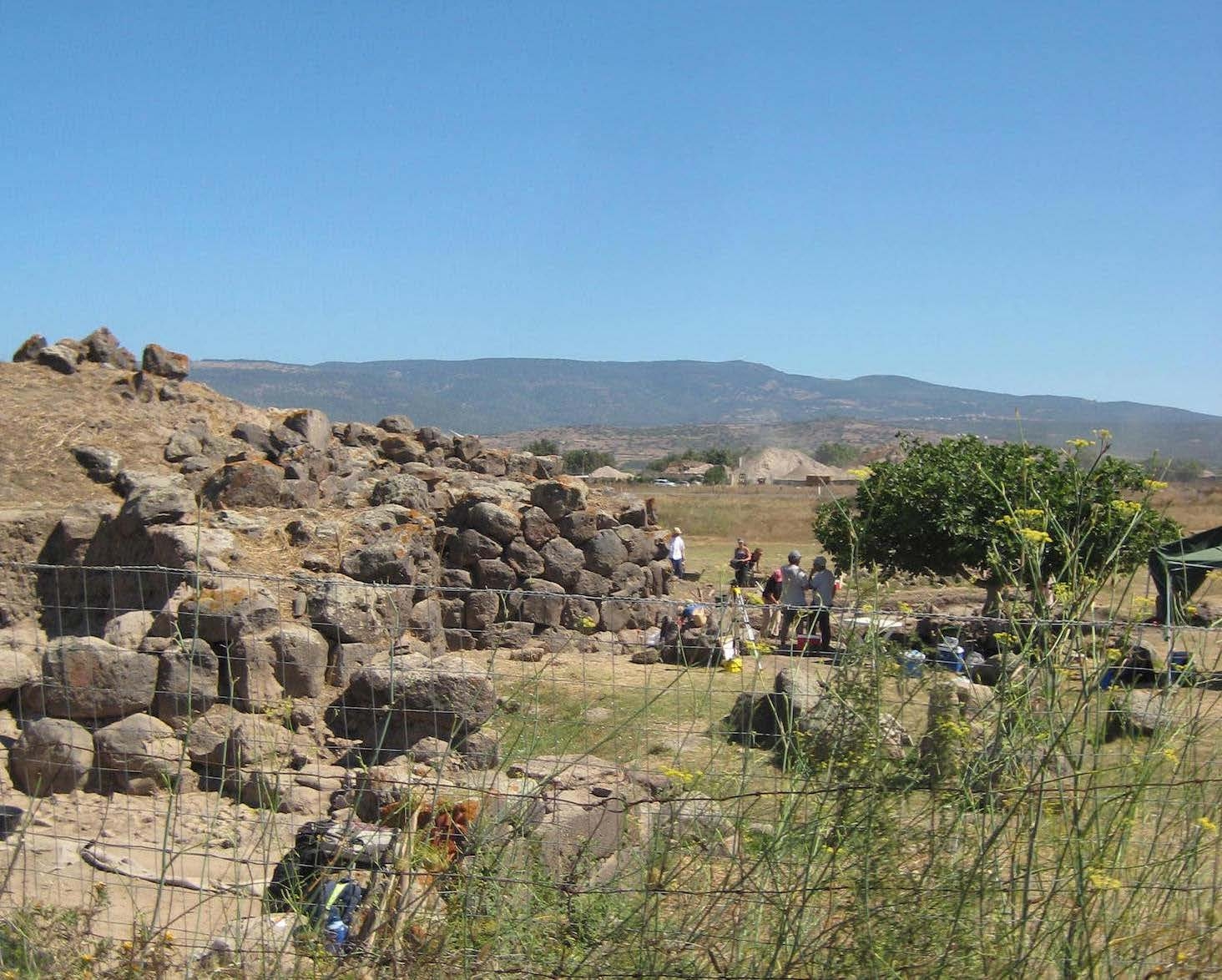
Speaker:
Dr. Linda Reynard
Research Associate
Department of Human and Evolutionary Biology, Harvard University
Abstract:

Over the last 20-30 years, the analysis of stable isotope ratios from bones and teeth has contributed tremendously to the understanding of paleodiets, paleoenvironments, and migration. However, hydrogen and oxygen isotope ratios in collagen are understudied compared to the well-known use of carbon, nitrogen, and strontium isotope ratios. Given that hydrogen and oxygen show geospatial patterns of isotopic variation as tracers of the global hydrological cycle, further investigation of the utility of these tracers for archaeological studies is warranted. I will outline results of our study using the Mediterranean basin as a test case, involving Late Bronze and Iron Age humans and fauna from five sites spanning 3500 km east-west across the Mediterranean basin. This rich data set shows highly variable faunal isotope ratios; in contrast, humans have tight population mean isotopic ratios. Diet type, digestive physiology, and human manipulations of foodstuffs likely play a role in causing these patterns. In addition,environmental variability between the sites is noted in the collagen isotope ratios. These results demonstrate that hydrogen and oxygen isotope ratios in bone are valuable tracers, but equally that much further work is needed to elucidate the mechanisms responsible for the patterns seen.
Bio:
Dr. Reynard is a research associate and lecturer at the Department of Human and Evolutionary Biology,
Harvard University. Her research includes the application of state of the art of Hydrogen and Oxygen
isotope geochemistry for paleodiet and paleoenvironment research in archaeology. Dr. Reynard finished her D.Phil, and her M.Sc. in archaeological science at University of Oxford.
Contact Sumiji Takahashi
Email sutakahashi@ioa.ucla.edu
Phone 310-825-4169
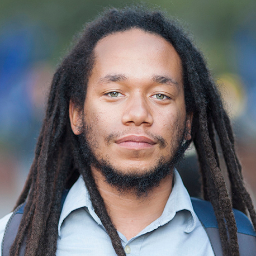
Speaker:
Dr. Justin Dunnavant
UC President’s Postdoctoral Fellow
University of California, Santa Cruz
Bio:
Dr. Justin Dunnavant is a UC President’s Postdoctoral Fellow
at the University of California, Santa Cruz. He holds a BA in
History and Anthropology from Howard University and an
MA and Ph.D. from the University of Florida. While his
former research interrogated the history and representation of minority groups in southern Ethiopia, his current work in the US Virgin Islands investigates the relationship between ecology and enslavement in the former Danish West Indies.Justin has conducted archaeological research in US VirginIslands, Belize, Jamaica, Ethiopia, Tanzania, Mozambique, andThe Gambia.
Abstract:
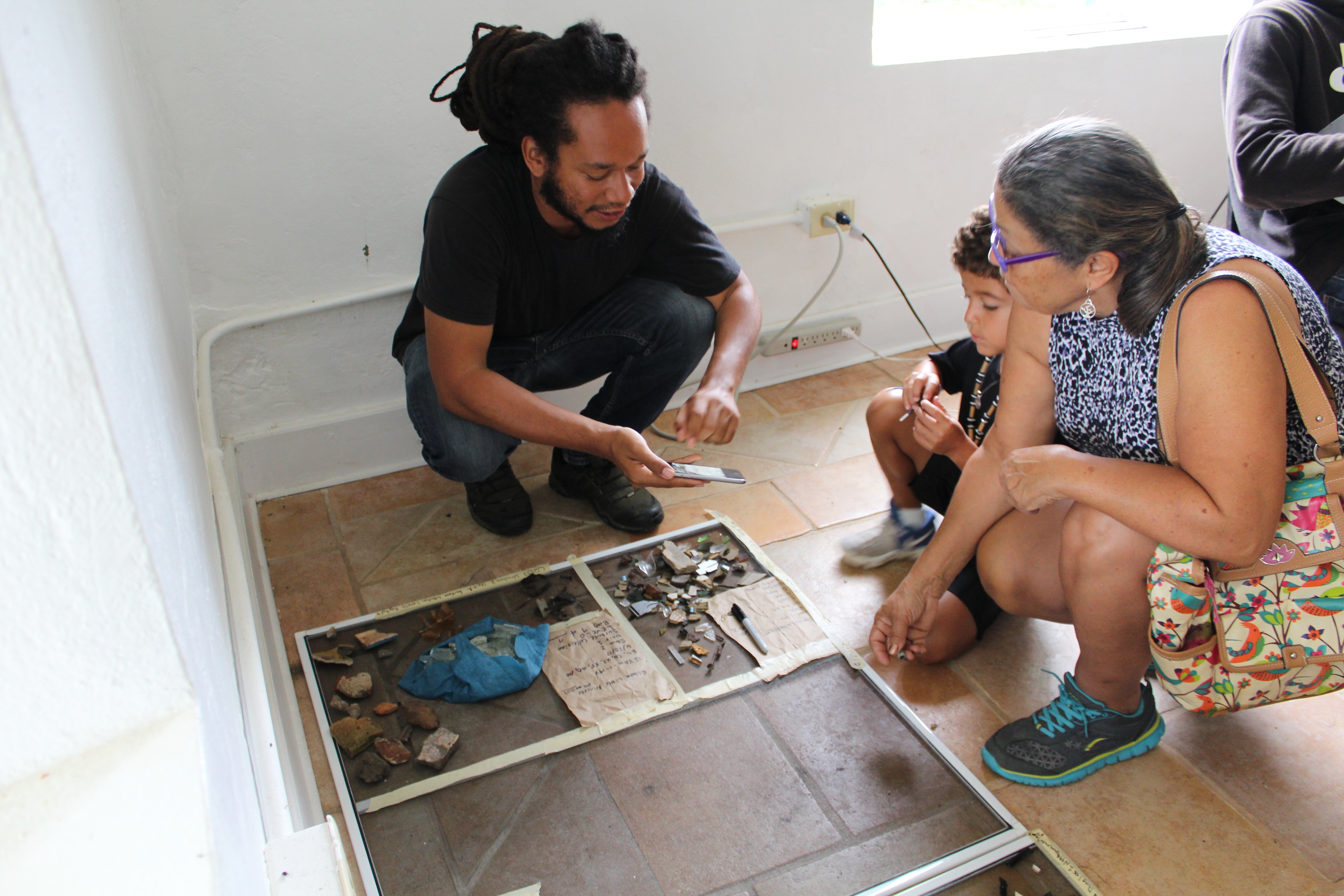
The transatlantic slave trade era – marked by chattel slavery, racial capitalism, and exploitative plantation economies – radically transformed societies and environments in the Americas. In this talk, I attempt to craft a historical ecology of the African Diaspora through an analysis of slavery in the Danish West Indies. Drawing from an array of archaeological, historical and environmental data, I argue that the development of plantation slavery elicited lasting ecological changes as colonial planters developed exploitative monocrop agricultural systems and enslaved Africans made a life in the Caribbean. Theoretically, I use a Black Geographic lens to interrogate the relationship between African diasporic communities and their Atlantic environments. Finally, I posit the need to engage questions of sustainability as a form of redress in contemporary archaeological praxis.
Contact Sumiji Takahashi
Email sutakahashi@ioa.ucla.edu
Phone 310-825-4169

Speaker:
Christine A. Hastorf
University of California, Berkeley
Abstract:
Plants have been the most common non-human set of species that people have engaged with over human existence. While most people speak of domesticating plants, they too have domesticated us. They have formed intimate relations with us, having convinced our ancestors to settle down and care for them. At times they have become kin, moving in with us and sustaining us, like a good grandmother. How can we see these intimate relationships with plants in the past, given that they are often scarce in archaeological sites? By thinking about plants in more social ways we can begin to get closer to people’s choices, values and engagements with plants as we accept that this has been an intimate relationship since the before the palaeolithic times.
Bio:
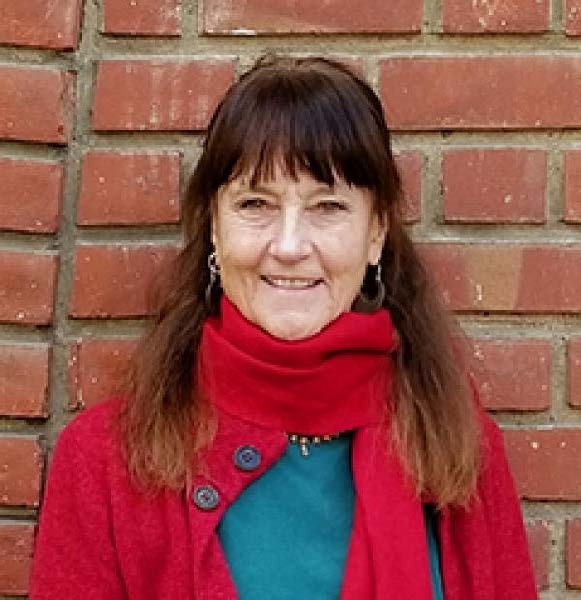
Christine Hastorf is a professor of Anthropology at the University of California Berkeley. She is a leading scholar in the field of paleoethnobotany. She is currently the director of the McCown UC Berkeley archaeobotany laboratory and the Archaeology Research Facility at UC. Berkeley. As archaeologist, she led archaeological work in the Andean region of South America since 1980 with focus on plantpeople relationship. Her published books include Agriculture and the Onset of political inequality before the Inka; Empire and domestic economy; Heads of State: Icons, Power, and Politics in the Ancient and Modern Andes. Her most recent book is the Social Archaeology of Food:Thinking of food in Prehistory.
Contact Sumiji Takahashi
Email sutakahashi@ioa.ucla.edu
Phone 310-825-4169
Speaker and Bio:
Elizabeth Brite is a clinical assistant professor in the Honors College, Purdue University. She is also co-director of the Khorezm Ancient Agriculture Project in Karakalpakstan, Uzbekistan. Dr. Brite received her Ph.D. in Anthropology from UCLA in 2011.
Abstract:
This talk explores the recent proliferation of studies on the plant-people relationship in ancient Central Asia. Over the last 25 years, signifi cant data sets of ancient plant remains and other dietary indicators have emerged from major and minor archaeological sites across the region. Many of the studies that have produced these data pursue a wide-ranging picture of the transmission of domesticated plants across cultures and emphasize the role of the Silk Road in shaping food globalization in prehistory. Contrasting these are other studies that examine the local, embedded, and indigenous facets of ancient plant usage and domestication within Central Asia itself. Both perspectives capture fascinating aspects of ancient human-environment dynamics in Central Asia using novel approaches. They also mirror contemporary discourse about globalization and its implications for human societies. This talk will explore these bodies of emerging scholarship and present information on new research in Central Asia aimed at addressing some of the recent trends.
Contact Sumiji Takahashi
Email sutakahashi@ioa.ucla.edu
Phone 310-825-4169
Alexander Ahrens is a Senior Researcher with the Damascus Branch, Orient Department of the German Archaeological Institute. Currently, he is a Visiting Scholar at the Joukowsky Institute for Archaeology and the Ancient World at Brown University (as recipient of a 2019 AIA/DAI Study in the U.S. Fellowship). He holds a PhD in Near Eastern Archaeology from the University of Bern (Switzerland), and a MA in Near Eastern Archaeology and Egyptology from the University of Tübingen (Germany). Apart from his most recent project work in Jordan, he has actively participated in excavations at several sites in Syria, Lebanon, Egypt, and Turkey.

Title:
The Wadi Shuʿaib Archaeological Survey Project: First Results from Field Research 2016−2018
Abstract:
The Wadi Shuʿaib Archaeological Survey Project (WSAS) was initiated in 2016. The Wadi Shuʿaib Archaeological Survey Project (WSAS) concentrates on a thorough survey and reevaluation of all archaeological and historical sites in the Wadi Shuʿaib, ranging from the Neolithic Period to the Ottoman Period, starting from immediately south of the city of as-Salt down to the city of Shuna South (Shuna as-Janubiyyah) located at the mouth of the wadi in the Jordan Valley. As part of the survey project, since 2017 excavations are carried out at the site of Tell Bleibil (Tall Bulaybil), located at the mouth of the alluvial fan of the Wadi Shuʿaib in the southern Jordan Valley.
Contact Sumiji Takahashi
Email sutakahashi@ioa.ucla.edu
Phone 310-825-4169
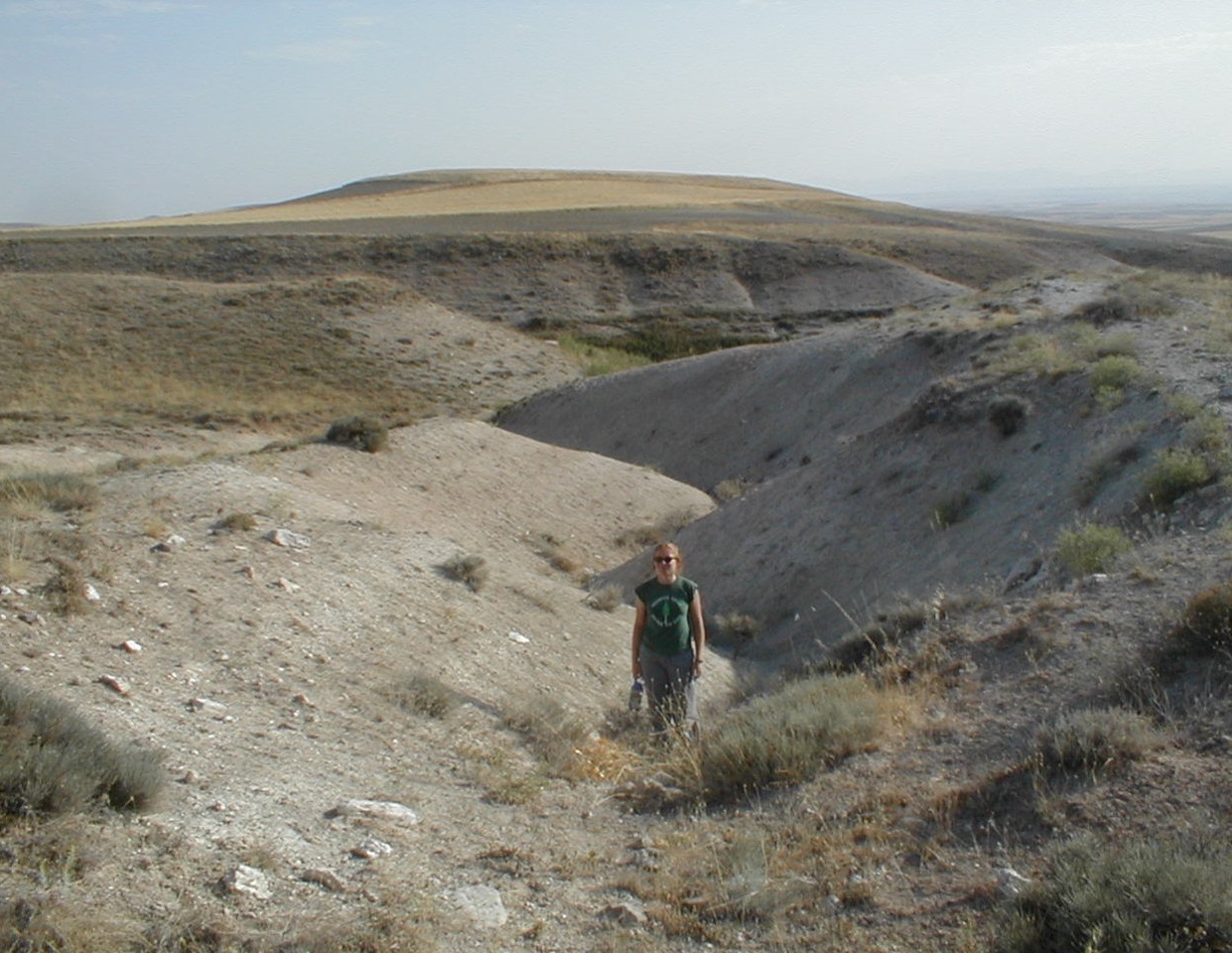
Dr. Lisa Kealhofer
Professor, Anthropology and Environmental Studies and Sciences, Santa Clara University
Abstract:
Archaeologists have often assumed that agricultural strategies are significant factors in altering environments. Narratives of societal collapse typically point to environmental degradation as an outcome of population increase or political breakdown. We use a version of Niche Construction Theory to interpret the timing and nature of landscape change around Gordion in central Anatolia over the last 5000 years. Recent work in the Gordion region by us and others demonstrates that major environmental change is only weakly connected to standard measures of agricultural intensification. Using detailed stream histories and survey-based settlement data, we show that the largest environmental changes predate significant settlement in small watersheds, while the largest regional-scale changes postdate high intensity settlement and land use. By integrating multiple lines of evidence, we identify and date both environmental perturbations and possible counteractive niche construction strategies associated with political centralization.
Contact Sumiji Takahashi
Email sutakahashi@ioa.ucla.edu
Phone 310-825-4169
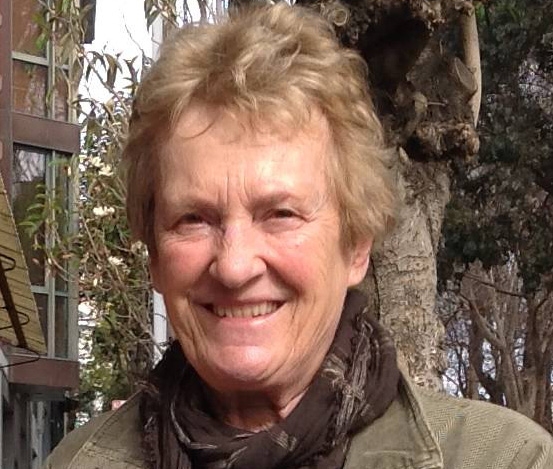
Dr. Ruth Tringham
Professor
Graduate School (Anthropology)
UC Berkeley
ABSTRACT:
This presentation describes a path to addressing the discomfort that I and many of my braver colleagues have had when putting words into the mouths and heads of prehistoric actors, knowing that these words say more about us than they do about prehistory. Yet without such speech, how are we archaeologists and the broader public to imagine the intangibles of the deep past (emotions, affect, gender, senses)? Moreover, such words create a misleading certainty that conceals the ambiguities of archaeological data. Are there alternative options to verbal and vocal clarity when creating imagined fictive narratives about the past? With inspiration from composer Györgi Ligeti, from linguists and experimental psychologists, and from ASMR performers, I explore the emotive power of vocal non-verbal interjections and utterances that have more universality and less cultural baggage, using them in three diverse remediations of digital media from three prehistoric archaeological contexts in Europe and Anatolia.
Contact Sumiji Takahashi
Email sutakahashi@ioa.ucla.edu
Phone 310-825-4169
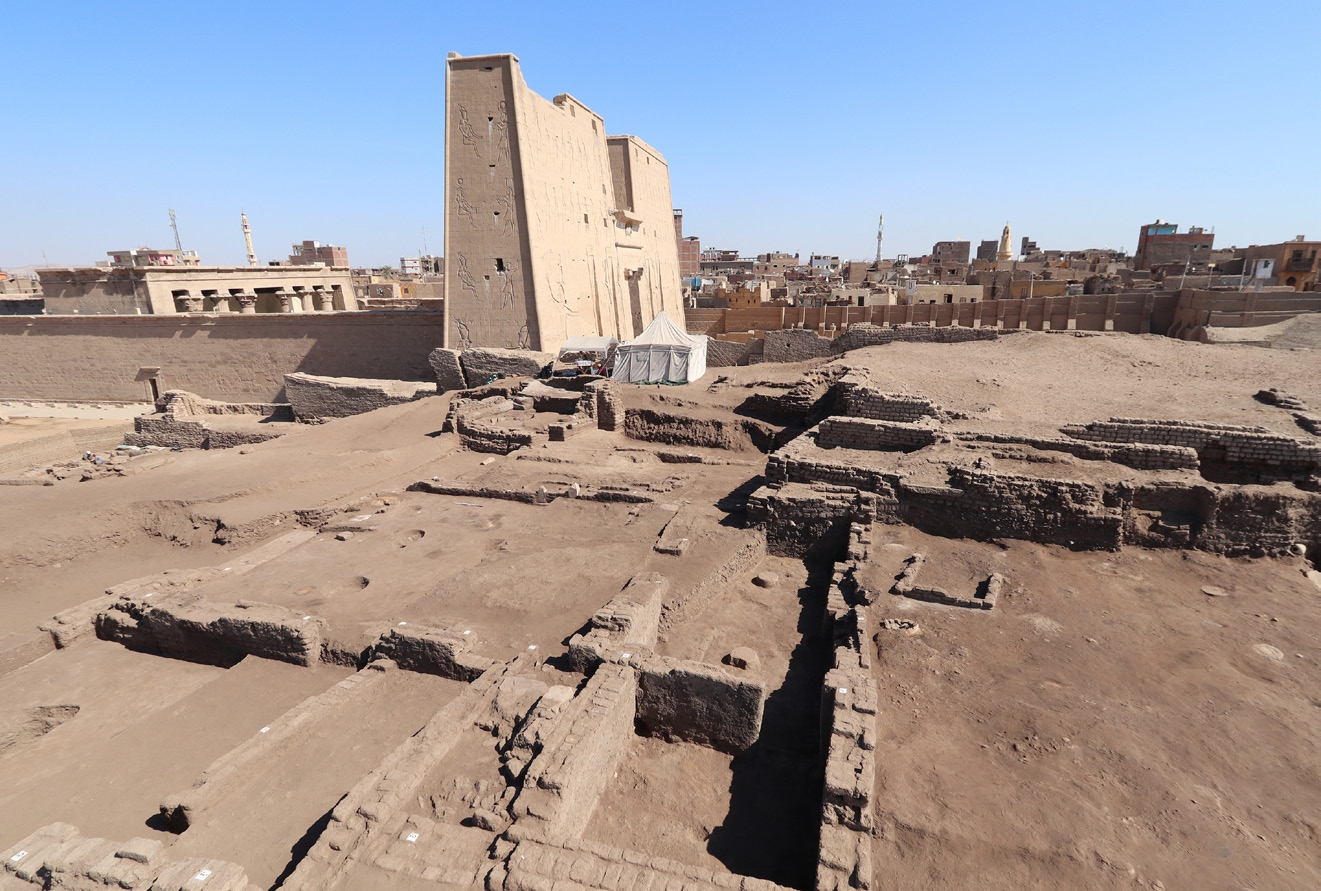
Nadine Moeller
Associate Professor of Egyptian Archaeology
University of Chicago
Abstract:
The ongoing excavations by the Oriental Institute team directed by Nadine Moeller and Gregory Marouard have during the most recent seasons focused on settlement remains dating to the Old Kingdom. Located 20 m to the west of the much later Ptolemaic temple of Horus of Edfu, excavations revealed several phases of domestic installations from the second part of the 6th Dynasty that covered an older administrative complex with several massive mudbrick structures dating to the late 5th Dynasty that had been installed directly onto the natural Nile sand deposits in an area never settled before that date. Based on their size, architectural details and related finds, the two large buildings are of official nature and constitute a newly founded settlement quarter in the ancient town of Behdet (Edfu). Among the finds are more than 220 clay sealings naming king Djedkare-Isesi (late 5th Dynasty, ca. 2434 BC), in addition to official titles that regularly mention a group of specialized workers involved in prospection and mining activities, the so-called sementiu. Additional finds such as numerous pieces of copper ore, important traces of metallurgical activities, Red Sea shells and a significant amount of Nubian ceramics found on the floor levels during the excavation further confirm the link to royal expeditions and mining activities in the Eastern desert areas.
The second area that has been the focus of fieldwork since November 2018 provided new evidence for a vast domestic quarter dating to the beginning of 18th Dynasty. Excavations have focused on a large urban villa of about 400 square-meters, which dates from the early Thutmoside period (ca. 1500-1450 BCE). This building is characterized by several rooms with columns. The largest and main room, a 6-columned hall, contained in one of its corners a well-preserved domestic sanctuary dedicated to the cult of the family ancestors. Numerous elements attesting to the cult activity have been found near a small fire place and offering table, including a very rare example of an ancestor bust and a statuette of a seated scribe
Contact Sumiji Takahashi
Email sutakahashi@ioa.ucla.edu
Phone 310-825-4169
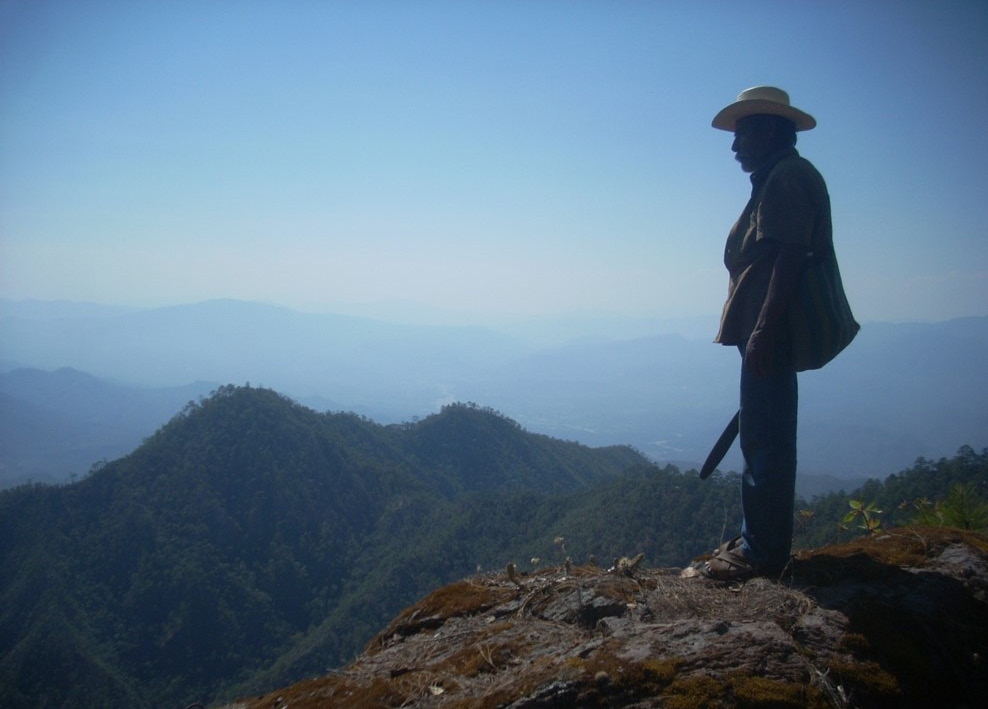
Dr. Stacie King
Associate Professor of Anthropology
Associate Faculty for the Center for
Latin American and Caribbean Studies
Indiana University Bloomington
Abstract:
This talk explores the challenges that ethnonyms create when trying to reconstruct
histories of multiethnic landscapes in the ancient world. My larger project in the Nejapa
region of Oaxaca, Mexico addresses various aspects of conquest and colonialism along
interegional trade routes, including identifying fortresses in mountain landscapes, the
meaning of unoccupied land, the relationships entailed by trade and exchange, and
reconciling archival documents, oral history, and archaeology. In this talk, I use my work
to demonstrate how ethnonyms have pervaded interpretations of the past, archaeological
reconstructions, and Colonial period registers, such that it remains difficult to envision a
different kind of thriving, multiethnic world. Taken together, archaeological data, archival
information, and oral history from rural multiethnic Nejapa, Oaxaca show us that
different indigenous communities across this landscape experienced Aztec, Zapotec, and
Spanish conquests and colonialisms differently between the years A.D. 1350 and 1650, and
that these differences do not fit well with traditional reconstructions of Nejapa’s
indigenous ethnic groups (Mixe, Chontal, and Zapotec). Instead, the data complicate
entrenched notions of ethnicity and challenge their basic formulation. The long-standing
multiethnic past of ancient Nejapa set the stage for a different form of indigeneity that
Nejapa’s resident experience in the present.
Contact Sumiji Takahashi
Email sutakahashi@ioa.ucla.edu
Phone 310-825-4169
- 1 of 7
- next ›



